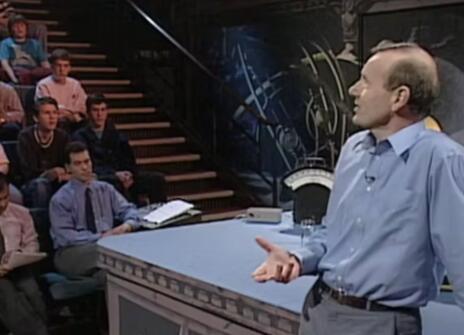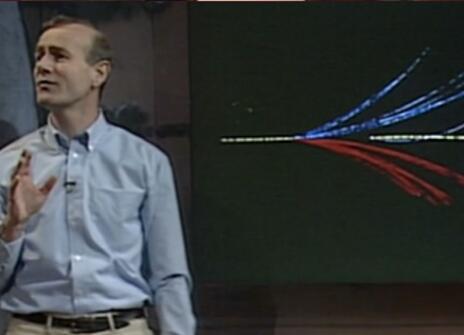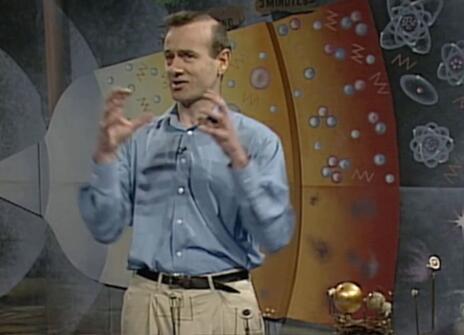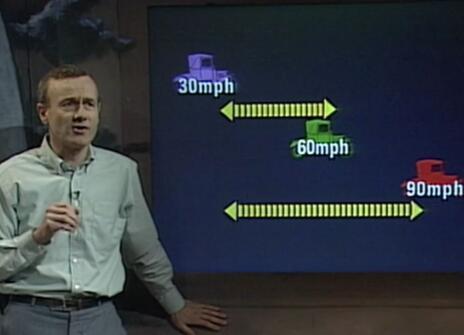Lecture 3 – Invaders from outer space
From the 1993 Lecture programme:
We are being invaded by extraterrestrials. The nuclei of atoms produced in deep space are whirled by electric and magnetic forces in the galaxy until, trapped by the Earth’s magnetic arms, they smash into the upper atmosphere far above our heads. Fragments rain down: millions of cosmic particles pass through our bodies all the time and, by means of spark chambers, we can expose them to view. The sparks show where particles smaller than atoms – such as electrons, protons, atomic nuclei – have passed by.
Occasionally, if you are lucky, you may see these particles produce matter from energy – E = mc2 at work. Cosmic rays show that there are things in the Universe that we didn’t know existed. To understand these essential pieces in Nature’s jigsaw we need to produce intense versions of the cosmic rays here on Earth and photograph efficiently what happens
This brings us to the era of the high energy particle accelerator and to the beautiful images of the bubble chamber. The abstract art trails in bubble chamber photographs are like hieroglyphics that reveal the secrets of the Universe. They lead us to discover that deep inside all matter are bizarre particles called 'quarks'. And with the aid of a huge electron microscope we can even capture direct evidence of these ultimate particles, among the first inhabitants of the Universe.
About the 1993 CHRISTMAS LECTURES
In our 1993 CHRISTMAS LECTURES, particle physicist Frank Close OBE looks at how our understanding of particle physics developed over the 20th century.
From the 1993 Lecture programme:
The lectures will trace a hundred years of discovery and invention, culminating with a look into the crystal ball towards the next century. The developing story begins in 1893, when the Royal Institution lecturer inhabits a world ignorant of radioactivity, electrons and the working of atoms, knowing nothing of how stars shine, nor of galaxies let alone that they are rushing outwards from a primeval big bang.
Even so, scientists were confident that they were on the brink of describing all basic natural phenomena. Fundamental discoveries at the turn of the century changed all that. Hints that “all was not well” turned out to be true and revolutionary rather than requiring tinkering with a few ideas.
A century later, in 1993, one hears talk of a 'Theory of Everything' and there is debate as to whether we can 'know the mind of God'. Yet even now there are hints that 'all is not well'. The lectures will bring us to the current frontier and try to learn from the experiences of the intervening century of discovery and controversy.
The theme will show how discoveries of natural phenomena provide new tools that, in turn, open up new areas of research leading to further insights, innovation and technologies. The developments feedback, creating new opportunities which often are far removed from the original discovery. The net result is that we are continually extending and deepening our experiences of Nature beyond those accessible to our five senses.
Our five senses reveal the beauty of the everyday world, enabling us to look out to nearby stars, to focus on objects as small as the width of a human hair and to react to events as brief as 1/25th of a second. Many other animals have sharper senses than ours but our ingenuity and inventiveness in effect extend our senses with telescopes, microscopes and other sophisticated tools. Thus it is our 'sixth sense' that expands our watch on the Universe, reveals images deep within individual atoms and discovers Nature at work on timescales of less than a microsecond.
Telescopes on satellites above the atmosphere capture light that was born when the galaxies first formed. Experiments in high energy particle accelerators on Earth teach us how to decode these messages that reveal our origins: we are looking back to (nearly) the Big Bang.
At another extreme we can photograph and display the entire life of a single subatomic particle lasting a mere thousand millionth of a second – an essential part of Nature’s scheme but hidden from our five senses. As hieroglyphics contained the secrets of the Pharaohs, so do these modern pictographs from CERN begin to reveal the story of creation. Not only can we see how the stuff of the present Universe was formed, we also have clues to its possible fate.




